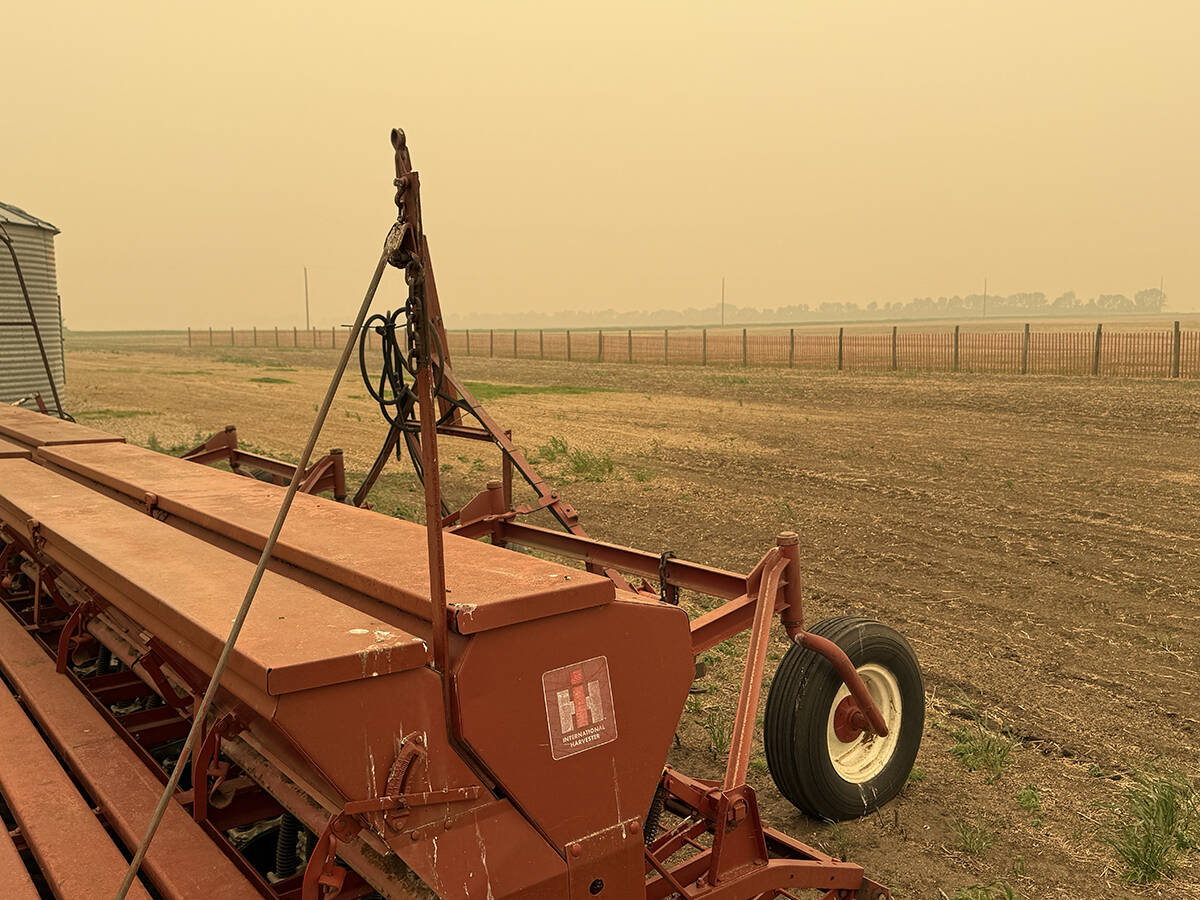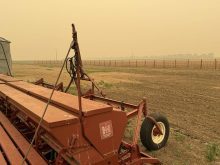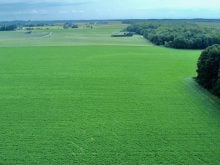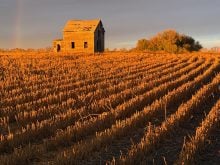Kochia is a common, non-native weed that can be baled for feed during times of feed shortages, but producers must be aware that it is a good news-bad news option.
“If kochia is baled at later stages of maturity, it may comprise up to 40 percent of the diet for cattle. If baled at an earlier stage of maturity, it may comprise up to 30 percent of the diet,” said Murray Feist, provincial feed specialist with Saskatchewan Agriculture in Saskatoon.
“But kochia contains a component called oxalate, which binds with calcium in the bloodstream and can lead to low calcium levels. This not only severely reduces the calcium availability to body systems, it can also block renal systems in the kidneys which, if excessive amounts of kochia were ingested, can result in death. Oxalates can also be produced by some fungi on mouldy feedstuffs.”
Read Also

Wildfires have unexpected upside this year
One farmer feels smoke from nearby wildfires shrouded the July skies and protected his crop from the sun’s burning rays, resulting in more seeds per pod and more pods per plant.
Feist said oxalates can cause short-term problems when ruminants such as sheep or cattle are turned onto pasture and allowed to graze kochia, which is often found on saline land.
Symptoms of short-term oxalate poisoning include laboured breathing, depression, weakness, coma and death. Some animals have convulsions or show symptoms of tetany, such as severe muscle stiffness and lockjaw, within two to four hours of eating a feed containing high levels of oxalates. Animals that show obvious signs of consuming high-oxalate feeds will have serum calcium levels 20 percent lower than normal.
Animals with serum calcium levels less than 20 percent below normal usually die.
“The symptoms of long-term oxalate poisoning are similar to those of short-term poisoning, primarily weakness and depression, but are evident over a longer period of time before coma and death occur. A blood analysis for serum calcium may help in diagnosing oxalate poisoning,” Feist said.
“Hungry animals are more likely to suffer from these symptoms than animals fed prior to ingesting oxalate-laden feeds. The keys to preventing poisoning are the gradual introduction of kochia to the diet, and not exceeding the maximum feeding levels.”
There are no kochia-feeding recommendations for deer, elk and bison, so kochia should be fed sparingly to these species. Bison producers should be particularly cautious because bison retain feed in their rumen for a longer time, said Feist.
“If kochia is fed to deer or elk, it would be prudent to limit its level in the diet, and offset the effect of this plant by feeding a forage source that is high in calcium, such as alfalfa, or ensure adequate calcium intake with mineral supplementation.”
To prevent oxalate poisoning, producers should add calcium supplements to feed rations heavy in kochia.
This will negate the effect of kochia on calcium utilization.
“Prepared minerals containing calcium and phosphorus can be used or, if a mixed diet is fed, additional limestone,” said Feist.














